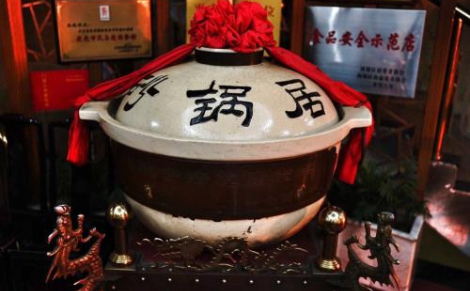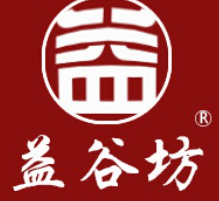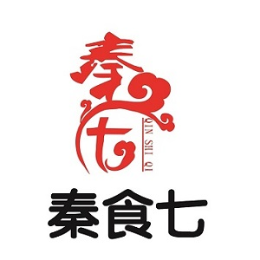砂锅居品牌怎么样 申请店铺
外推网助力砂锅居品牌出海!将品牌入驻外推网,定制砂锅居品牌推广信息,可以显著提高砂锅居产品曝光,简直是跨境电商爆单神器!目前仅需1000元/年哦~

砂锅居始建于大清乾隆六年(公元1741),距今已有266年历史,原坐落在西城缸瓦市大街路东乾隆皇帝第一子——定亲王府邸的更房近旁。现址是北京市西城区西四南大街60号。清朝满族人入主北京带来了满族人的文化。清朝宫廷、王府有“朝祭”、“夕祭”、“日祭”的制度。祭神时要“省牲”(杀猪的忌讳说法)、“摆件子”(切取猪体各部的肉和内脏,摆在桦木大槽中呈整猪形)上祭。祭祀时吃了“供尖”后还有些剩余肉,便赏给看街的更夫们。虽说按规定祭肉是不能出门的,但主家并不严控,常有“破例”。
清朝时,西城从西单到西四一带是王公贵族的住地。定王府、礼王府等大宅门都在缸瓦市附近。缸瓦市也就设有看街的更夫。清乾隆年间,一位琐居缸瓦市的刘姓更夫与一王府管事的人松七是哥们。当年王府内朝祭夕祭频频求福祈祥。刘姓更夫常从松七手里拿到余肉和供品。“神余”吃不完,遂想起在更房置些旧桌、旧凳、碗筷做起生意。后与王府庖丁(厨师)合作,做出多种菜肴,将王府烹饪技法传入社会。该店煮肉时用的是一口直径四尺深三尺一次可煮一头整猪的大沙锅。
关于砂锅居有店名说法也不一。有人说砂锅居之初因煮卖白肉叫“白肉馆”,后叫和顺居,取和和顺顺之美意。因为砂锅生意好,吃的人多,人们便以砂锅居替代和顺居。另种说法是,砂锅居最初没字号,到了清朝道光年间(1821-1850年),东四牌楼有一家白肉馆叫“和顺馆”,因生意衰微,经营不下去,店主见砂锅居生意很好,就找人撮合,与砂锅居合并,改字号为和顺居。据老辈儿们口传,在光绪年间店家请了正红旗世管佐领柏三爷(字松年,满洲沙济富察氏)题写了“沙锅居”的字匾,才有了正式的字号牌匾,一直做着砂锅煮白肉的生意。现在,人们都习惯写“砂锅”,其实“砂”和“沙”的意思基本一样。所以,别看以前字匾写的是“沙锅居”,如今却约定俗成地改做“砂锅居”了。
在北京老字号商铺的历史上,砂锅居有一段令人费解的“经营一怪”。“自开业始,直到民国年间,一直是半日营业,到中午12时,就摘幌子、卷门帘,停止营业。”故而至今流传“砂锅居买卖——过午不候”的歇后语。清嘉庆年间,有人曾写砂锅居生意之盛景:“缸瓦市里吃白肉,日头才出已云迟”。清道光二十五年(公元1845年),砂锅居被杨静亭《都门纪略》收录。有“白肉片,烩肝肠,烧下碎,烧下颏,和顺白肉馆在西四牌楼缸瓦市路东”的载文。早年砂锅居经营半日摘幌子停业,一却是因为味美而人们趋之若鹜;再就是真正的原因,为保证质量得用砂锅把头天晚上宰杀的百十斤重的京东鞭猪,拾掇干净后,连夜煮、火靠,次日一早正好熟透,8时开门,一上午准光。因而“西城缸瓦市有白肉馆,日以一豕飨客,不涉它味,逾午则闭门矣”。砂锅居的半日“经营一怪”直到1937年才变了。据史料记载,1937年“七·七”事变后,北京沦陷日伪之铁蹄下,因“砂锅居”风味独特,名气很响,所以日本和汉奸中的要人,常在此吃喝请客。此类恶人才不管你什么“过午不候”呢!经常是下午和晚间来此吃喝,店主慑于日伪的淫威,不得不改变多年的经营习惯,实行了全天营业。从此,砂锅居中午不摘幌子,增添了晚餐。娄锐在《首都杂咏》写的:“打破旧规添晚卖,为合时代也牺牲”说的就是这段这事。
据说砂锅居在新中国成立前挂有三块匾。左为和顺居,右为砂锅居,中间那块是白肉馆,很独特。1963年在原址南百米处建了砂锅居饭庄。“文革”期间砂锅居经营受到冲击,而变味成“炒菜居”1972年砂锅居重新恢复了字号。1975年砍下了菜单上的30多个“杂菜”,突出特色风味,同时挖掘创新了一些风味菜,使其既保持原有特色,又有所创新和发展。砂锅居从1952年起,把大砂锅改为小砂锅后增添了小砂锅炖煮的白肉、三白等,并增加炒菜。1992年砂锅居重新翻建成三层楼房,并于1994年12月28日重张营业。1998年8月8日,砂锅居现传承人杨树松与通州森林陶瓷、邯郸陶瓷共同研制做成“实物幌”—直径1.20米、高0.76米、重218公斤的特大砂锅,作为镇店之宝,陈设在门口,以文化吸引顾客。
砂锅居的龙、凤、福、禄、寿、喜、天、地、人和等雅间,环境典雅豪华,太师椅、条形案、八仙桌及餐桌椅都是以花梨木原料雕刻制作。所用瓷片都是仿大清乾隆年间的黄万寿,北京御膳风味的菜肴与宫廷装修风格浑然一体,浓郁的京都饮食文化特色突出。
目前,砂锅居还走上连锁发展之路,现有直营分店海淀砂锅居双榆树店。2006年,被国家商务部重新认定为“中华老字号”。2009年,砂锅居“全猪席”获得北京市非物质文化遗产。
The casserole house was built in the 6th year of Qianlong in the Qing Dynasty (1741 A.D.), with a history of 266 years. It was originally located near the Genghen house, the first son of Emperor Qianlong in the east of the street of gangwa City, the west city. The current address is No. 60, xissinan street, Xicheng District, Beijing. The Manchu people came to Beijing in Qing Dynasty, which brought Manchu culture. In Qing Dynasty, there was a system of "Dynasty sacrifice", "night sacrifice" and "day sacrifice". When sacrificing to the gods, we should "save animals" (the taboo of killing pigs) and "decorate children" (cut the meat and viscera of all parts of the pig, and put them in a big birch trough in the shape of a whole pig) to sacrifice. After the sacrifice, there was some surplus meat, which was rewarded to the watchmen. Although according to the regulations, it is not allowed to go out to sacrifice meat, but the master is not strictly controlled, and there are often "exceptions". During the Qing Dynasty, the west city was the residence of the princes and nobles from Xidan to the West four areas. Dingwangfu, liwangfu and other big houses are all near the city of gangwa. There are also Street watchers in gangwa. In the Qianlong period of the Qing Dynasty, Song Qi, a man who was in charge of the first Prince's mansion and Liu Chengfu, who lived in the city of gangwa, was a friend. At that time, the royal family often prayed for blessings and auspiciousness during the festival. Liu Changfu took the remaining meat and offerings from Song Qi. "Shenyu" couldn't finish eating, so he thought of setting up some old tables, benches and chopsticks to start a business. After that, he cooperated with the royal cooks (chefs) to make a variety of dishes, and introduced the Royal cooking techniques into the society. This shop uses a big casserole with a diameter of four feet and a depth of three feet to cook a whole pig at a time. There are different views on the name of casserole house. Some people say that at the beginning of the casserole house, it was called "white meat house" for cooking and selling white meat, and later it was called "Harmony House". It means "harmony and harmony". Because the casserole business is good and there are many people to eat, people will replace heshunju with casserole house. Another way of saying is that the casserole house didn't have a brand name at first. In the Daoguang period of the Qing Dynasty (1821-1850), there was a white meat restaurant called "Heshun hall" in dongsigailou. Because the business was declining and the business couldn't go on, the owner of the restaurant saw that the casserole house was very good, so he asked for a match and merged with the casserole house. The name was changed to Heshun house. According to the old people's oral tradition, during the reign of Guangxu, the shop owner asked Bai Sanye, the assistant manager of Zhenghong banner, to inscribe the plaque of "casserole house". Only then did the official plaque come into being, and he has been engaged in the business of cooking white meat in casserole. Now, people are used to writing "casserole", in fact, "sand" and "sand" basically mean the same. So, don't look at the plaque that used to write "casserole house", but now it is conventionally changed to "casserole house". In the history of time-honored shops in Beijing, casserole house has a puzzling "strange operation". "Since its opening, it has been open for half a day until the Republic of China. By 12 noon, it will be closed by taking off the cover and rolling up the curtain." Therefore, there is a saying that "casserole house business - do not wait for lunch". During the Jiaqing period of the Qing Dynasty, someone once wrote about the prosperous business of casserole house: "eating white meat in the city of gangwa, it's too late for the sun to come out.". In the 25th year of Daoguang reign (1845 A.D.), the casserole house was included in Yang Jingting's A.D. There are "slices of white meat, stewed liver and intestines, burned to pieces, burned to chin, and Heshun white meat restaurant in the West Fourth pailou, in the east of gangwa road". In the early years, the casserole house was closed for half a day. First, people flocked to it because of its delicious taste. Then, for the real reason, to ensure the quality, we had to use the casserole to clean up the 100 kg Jingdong whip pig slaughtered the night before, cook it all night long and lean on the fire. The next morning, it was just ripe. It opened at 8:00, and the morning was almost bright. Therefore, "there is a white meat restaurant in gangwa City, Xicheng city. It treats its guests with a rag and a rag every day. It doesn't involve its taste. After noon, it will be closed.". It was not until 1937 that the "strange business" of casserole house changed. According to historical records, after the July 7th incident in 1937, Beijing fell into the hands of Japan and the puppets. Because of the unique flavor and famous reputation of "casserole house", the important people in Japan and the traitors often eat, drink and entertain here. This kind of villain doesn't care what you don't wait for at noon! Often in the afternoon and in the evening to eat and drink, the shopkeeper was awed by the obscenity of the Japanese puppet, and had to change his business habits for many years, and carried out a full-time business. Since then, the casserole in the middle of the afternoon does not pick a cover, adding dinner. Lou Rui wrote in the miscellaneous chant of the capital: "breaking the old rules and selling late, and sacrificing for the sake of keeping up with the times." this is what he said. It is said that the casserole house had three plaques before the founding of new China. On the left is heshunju, on the right is casserole house, and the middle one is white meat restaurant, which is unique. In 1963, the casserole restaurant was built at the place 100 meters south of the original site. During the "Cultural Revolution" period, the operation of casserole house was impacted. In 1972, casserole house resumed its name. In 1975, more than 30 "miscellaneous dishes" on the menu were cut down to highlight the special flavor. Meanwhile, some flavor dishes were excavated and innovated to maintain the original characteristics and develop. Since 1952, the casserole house has changed the big casserole into the small casserole, adding white meat, Sanbai, etc. stewed in the small casserole, and adding fried vegetables. In 1992, the casserole house was rebuilt into a three story building and reopened on December 28, 1994. On August 8, 1998, Yang Shusong, the inheritor of casserole house, together with TongZhou forest ceramics and Handan ceramics, developed and made a "physical front" - a giant casserole with a diameter of 1.20 meters, a height of 0.76 meters and a weight of 218 kg. As a treasure of the town, it was displayed at the door to attract customers with culture. The dragon, Phoenix, Fu, Lu, Shou, Xi, Tian, Di, Renhe and other elegant rooms in casserole house have elegant and luxurious environment. The Taishi chair, strip table, Baxian table and dining table chair are all carved and made of rosewood. The porcelain pieces used are all imitations of Huang Wanshou in the Qianlong period of the Qing Dynasty. The dishes of Beijing Imperial cuisine are integrated with the palace decoration style, and the rich characteristics of Kyoto cuisine culture are outstanding. At present, casserole house is still on the road of chain development, and now Haidian casserole house Shuangyushu branch is a direct branch. In 2006, it was re recognized as "China Time-honored Brand" by the Ministry of Commerce. In 2009, casserole was awarded the intangible cultural heritage of Beijing.
本文链接: https://brand.waitui.com/e7265b17f.html 联系电话:请联系客服添加 联系邮箱:请联系客服添加


















 浙公网安备 33011802001999号
浙公网安备 33011802001999号
